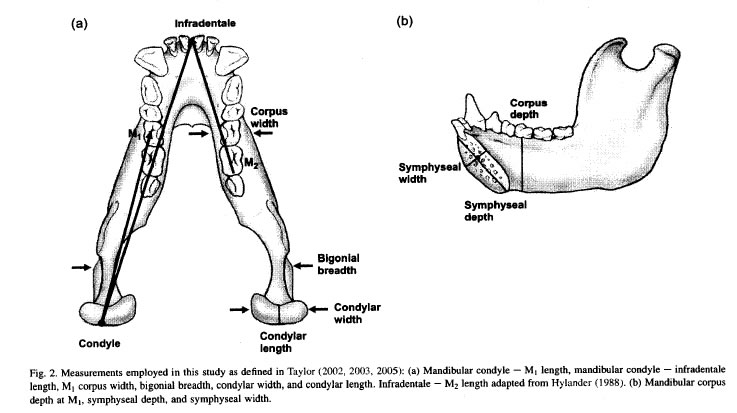Orangutan Feeding Ecology
(Bio 342 Fall 2007)
Jonathan R. Sweeney
Adaptive Value
Variation in Jaw Morphology: A response to feeding ecology
The relationship between feeding behavior, diet, and jaw morphology has been explored across geographic populations (1). Of all the great apes, orangutans are the most craniometrically variable; their jaws appear to be different depending on their location. The figure below represents the orangutan jaw and standard morphological measurements.
How has the jaw changed?

The orangutan jaw appears to have adapted to specialized diets in Borneo and Sumatra. Orangutans in general prefer fleshy fruit, but in parts of Borneo, limited fruit yield can force orangutans to consume bark and tougher vegitation. Given the dietary differences, it follows that Pongo pygmaeus (Borneo) has a jaw that can resist greater loads than the jaw of Pongo abelii (Sumatra). Among the Borneo subspecies, Pongo pygmaeus morio and Pongo pygmaeus wurmbii can tolerate the largest forces, followed by Pongo pygmaeus pygmaeus and Pongo abelii (Sumatra). This variation is again likely due to food type and availability.